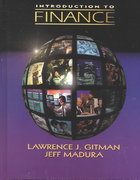Question
a. Calculate the weighted average cost of capital on the basis of historical market value weights. b.Calculate the weighted average cost of capital on the
a. Calculate the weighted average cost of capital on the basis of historical market value
weights.
b.Calculate the weighted average cost of capital on the basis of target market value
weights.
c.Compare the answers obtained in parts a and b.Explain the differences.
a. The weighted average cost of capital on the basis of historical market value weights is
nothing%.
(Round to two decimal places.)b.The weighted average cost of capital on the basis of target market value weights is
nothing%.
(Round to two decimal places.)
c.Compare the answers obtained in parts a and b. Explain the differences. (Select the best answer below.)
A.
Using historical weights, the firm has a higher cost of capital because historical costs are often higher than future expected costs.
B.
Using historical weights, the firm has a lower cost of capital because historical costs are often lower than future expected costs.
C.Using historical weights, the firm has a higher cost of capital due to the weighting of the more expensive common stock component,
72%,
versus the target weight of
62%.
D.Using historical weights, the firm has a lower cost of capital due to the weighting of the more expensive common stock component,
72%,
versus the target weight of
62%.
Click to select your answer(s).

Step by Step Solution
There are 3 Steps involved in it
Step: 1

Get Instant Access to Expert-Tailored Solutions
See step-by-step solutions with expert insights and AI powered tools for academic success
Step: 2

Step: 3

Ace Your Homework with AI
Get the answers you need in no time with our AI-driven, step-by-step assistance
Get Started


